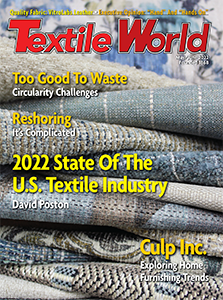CAMBRIDGE, England — March 22, 2016 — The conductive inks and paste business will generate a demand of 1,800 metric tons. IDTechEx Research forecasts that this will grow to 2200 by 2026. This business has come alive again and is now a business where literally everything is changing. The traditional markets are experiencing upheaval in terms of requirements and product leadership, whilst various emerging markets are opening up new frontiers.
The new IDTechEx Research report “Conductive Inks 2016-2026: Forecasts, Technologies, Players” provides the most comprehensive and authoritative view of the conductive inks and paste market, giving detailed ten-year market forecasts segmented by application and material/ink type. The market forecasts are given in tonnage and value at the ink level.
We provide a detailed analysis of at least 17 existing and emerging application sectors including silicon solar cells, UF/UHF RFID tags, touch screen edge electrodes, automotive, in-mould electronics, e-textiles, 3D antennas, 3D printed electronics, desktop PCB printers, ITO replacement, OLED lighting and others.
该报告基于多年的研究。我们的分析师拥有多年的先前经验,并且处于导电油墨/糊业务的最前沿,在创造数十亿美元的行业中发挥了重要作用。仅在过去的五年中,我们的团队就采访并介绍了50多种各种导电墨水和粘贴的用户和生产商。每年,我们都了解了更多有关市场的信息,并微调了我们的分析,洞察力和预测。
Photovoltaics
Everything in this sector is changing. At paste level, the initial group of suppliers that came to dominate the market are losing their leading position to those who were once low-cost and low-quality. This trend will continue in the short term, whilst in the long term we anticipate that this will become a Chinese business entirely. At the powder level, recent factory interruptions have convinced the end users to force through a more diversified supplier base despite the dominant supplier having a distinct quality advantage.
Touch Screens
这是一个不断变化的市场。高级手机中狭窄的挡板设计的采用使性能要求超出了标准PTF的限制和丝网印刷的限制,从而将市场开放到可抗光的糊状物上。这种趋势将继续,从长远来看,将偏爱竞争的印刷方法。标准PTF将继续损失份额,但由于其成本优势和低成本设备的兴起,将继续占据重大份额。激烈的成本竞争将在市场的这一末端继续进行,从而进一步侵蚀利润率。
3-D天线
3-D天线的气溶胶沉积正在吸引。该技术使天线能够直接存放在3D表面上,从而有助于节省空间。此外,它可以通过软件更改来适应设计的变化。现在,它即使成本也与LD竞争。我们预计,气雾剂将成为在消费电子设备中创建天线的主要过程,从而为银纳米粒子油墨创造了市场机会。
内部电子(IMES)
IME will make a comeback after the Ford setback. This process combines electronic and graphical printing on a 2D sheet which is then formed or moulded into a 3D shape. IME offers an elegant and attractive way to structurally integrate simple electronics into 3D-shaped objects, particularly for high-volume production. It will find use both in the automotive and consumer electronic segments. There is still room for product improvement and optimization. The value chain is also not well-established yet.
Stretchable Electronics
Electronic textiles (e-textiles) are on the cusp of growth. IDTechEx Research forecasts that it will grow from nearly $100 million in 2015 to nearly $3.2 billion in 2026 at the final product level. The interconnects and sensors are critical elements of all emerging e-textile products. Printing here can deliver value as it is a post-production process familiar to the textile industry. This is why the number of e-textile products and prototypes with printed conductive lines is rapidly increasing. There is room for innovation as current inks fail to meet all the required performance targets. This is because technical requirement in terms of adhesion, washability and stretchability are stringent.
3-D打印电子产品
3-D打印电子产品can become a platform technology for creating arbitrarily-shaped and customized smart and electronic objects. This can transform standard plastic-based 3-D printing. The interest is rising as evidenced by the recent increase in the numbers of approaches, machines, ink supplier and prototypes. There are, however, some technical challenges: the printed embedded lines must provide high conductivity even at low (<80°C) annealing temperature.
桌面PCB打印
印刷电子产品希望将“印刷”带回印刷电路板(PCB)行业。最近的趋势已经增加了台式PCB打印机,既针对市场的业余爱好者和专业目的。爱好机器是一种简单的系统,能够创建粗轨单线或双面PCB。他们与简单的CNC铣床竞争,并最终会输给。相比之下,专业台式打印机针对复杂的多层PCB板。他们试图减少原型制作时间,并使设计人员能够将电路IP保持在内部,同时也与低卷中的标准过程竞争成本竞争。这将是银纳米颗粒油墨的越来越多的机会,因为喷墨打印的导电线必须具有高度的指挥和狭窄。
RFID
RFIDs will become a business greater than $7bn in 2026 at the tag level. Printing is once again becoming a real contender for manufacturing RFID antennas. Silver prices have fallen, bringing down the BoM whilst the industry is projected to near full capacity utilisation soon, opening way for investment in new industrial process. UHF and HF RFID firms have already started adopting RFID antenna printing en masse, and IDTechEx forecasts that this trend will continue.
by Dr Khasha Ghaffarzadeh, Head of Consulting, IDTechEx
发布2016年3月22日
Source: IDTechEx




